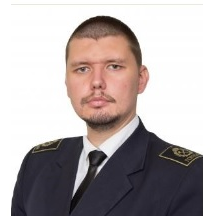Advances in Techniques of Construction, Development and Operation of Oil and Gas Wells
A special issue of Energies (ISSN 1996-1073). This special issue belongs to the section "H1: Petroleum Engineering".
Deadline for manuscript submissions: closed (10 October 2022) | Viewed by 21100
Special Issue Editors
Interests: the issues of sustainable petroleum production; utilization of petroleum gas; power supply of oil and gas fields; treatment and processing of crudes in the field conditions; carbon capture, use and storage at petroleum fields
Special Issues, Collections and Topics in MDPI journals
Special Issue Information
Dear Colleagues,
We invite you to submit articles regarding the broad topic of the petroleum well life cycle to be published in this Special Issue of Energies. We also welcome critical review articles from renowned experts in industry and academia.
Despite the existing trend towards green power sources, hydrocarbons will be essential for the world energy market for years to come. Sustainable development of modern society is impossible without reliable energy sources. Until renewables are able to cope with such problems as the efficient generation and storage of produced energy, oil and gas will provide a steady power supply for consumers. At the same time, traditional petroleum fields are being depleted. New deposits of oil and gas are located in remote and hard-to-reach regions, such as the Arctic. In addition to complicated conditions of petroleum production in these areas, environmental concerns are of great importance. A relevant trend is reducing the carbon footprint for oil and gas production. In this regard, this Special Issue deals with questions of modern techniques and approaches during the entire life cycle of petroleum wells: from construction to abandonment.
Topics of interest for publication include, but are not limited to:
- Well engineering
- Well integrity;
- Cement sheath integrity;
- Chemical instability;
- Wellbore strengthening techniques;
- Petroleum production;
- Fluid flow;
- Formation stimulation;
- Gas hydrates;
- Well completion;
- Well-killing technologies;
- Oil emulsions;
- Water shut-off;
- Geodynamically hazardous areas;
- Well development in the Arctic region;
- Unconventional oil and gas reserves;
- Optimization of energy consumption at well construction and operation;
- Directional and horizontal drilling;
- Artificial water-flooding;
- Low-permeable reservoirs;
- Well and reservoir surveys;
- Energy saving and digital technologies.
Dr. Valentin Morenov
Guest Editor
Prof. Dr. Tianle Liu
Co-Guest Editor
Manuscript Submission Information
Manuscripts should be submitted online at www.mdpi.com by registering and logging in to this website. Once you are registered, click here to go to the submission form. Manuscripts can be submitted until the deadline. All submissions that pass pre-check are peer-reviewed. Accepted papers will be published continuously in the journal (as soon as accepted) and will be listed together on the special issue website. Research articles, review articles as well as short communications are invited. For planned papers, a title and short abstract (about 100 words) can be sent to the Editorial Office for announcement on this website.
Submitted manuscripts should not have been published previously, nor be under consideration for publication elsewhere (except conference proceedings papers). All manuscripts are thoroughly refereed through a single-blind peer-review process. A guide for authors and other relevant information for submission of manuscripts is available on the Instructions for Authors page. Energies is an international peer-reviewed open access semimonthly journal published by MDPI.
Please visit the Instructions for Authors page before submitting a manuscript. The Article Processing Charge (APC) for publication in this open access journal is 2600 CHF (Swiss Francs). Submitted papers should be well formatted and use good English. Authors may use MDPI's English editing service prior to publication or during author revisions.






